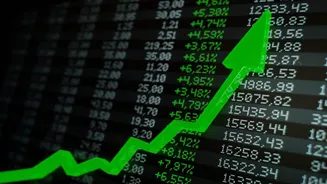Safe-Haven Demand Soars
Gold's status as a safe-haven asset is a significant driver behind its recent price surge. Investors often turn to gold during periods of economic uncertainty
or geopolitical instability, as it is seen as a reliable store of value. When other markets appear risky, gold serves as a cushion, offering protection against potential losses. Global tensions, economic slowdowns, and other uncertainties can all contribute to this increased demand for gold, pushing its price upwards. During times of financial turmoil, the demand for gold strengthens, as investors view it as a haven from market volatility. This flight to safety boosts the price of gold because of the high demand. This makes it a popular investment, and the increased demand drives the price even higher.
US Rate-Cut Bets
Another key factor influencing gold prices is the expectation of interest rate cuts in the United States. The Federal Reserve's monetary policy decisions have a direct impact on the value of gold. Lower interest rates tend to make gold more attractive to investors. When interest rates are low, the opportunity cost of holding non-yielding assets like gold decreases, thus making gold a more appealing investment. Investors start searching for alternatives that can generate more returns than holding government bonds. This is an environment that leads to increased demand for gold, as the yellow metal is seen as a good hedge against inflation. This expectation of rate cuts can therefore drive up demand, leading to higher prices. The anticipation of these cuts influences investors to consider investing in gold.
Impact on Investors
The rising gold prices have both positive and negative implications for investors. Those who hold gold can see their investments increase in value. However, the price surge can also lead to increased investment costs, making it harder to acquire the metal. Traders have to be more careful, and the market could become more volatile. Gold's current high prices might suggest a short-term correction, offering opportunities for traders to buy gold at lower prices. The price fluctuations can lead to different investment strategies by investors. Some investors may choose to sell their gold to take profits, while others might hold on, hoping for further gains. The market sentiment plays a critical role in the gold price. If the market is bullish, demand rises, and prices follow.
Market Outlook
The future direction of gold prices will largely depend on several factors, including ongoing global events, economic data, and the Federal Reserve's policy decisions. If economic uncertainty persists, and if interest rates decrease, then gold prices are likely to remain high. Factors like inflation, shifts in economic growth, and actions of global central banks also influence gold's future. The market is constantly evolving, and a lot of things can change. The interplay of these variables will decide whether gold continues to climb or experiences a period of stability or correction. Investors need to carefully monitor all these signals, looking to make informed decisions.
















